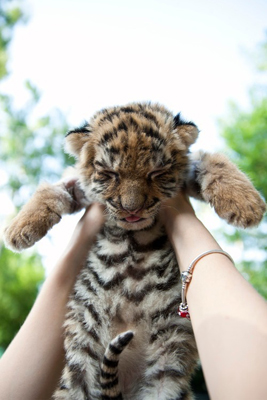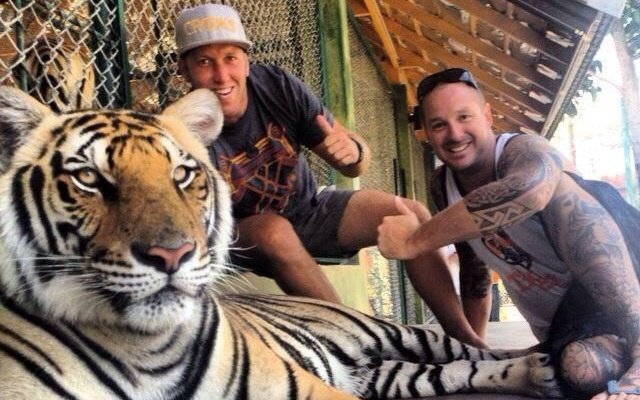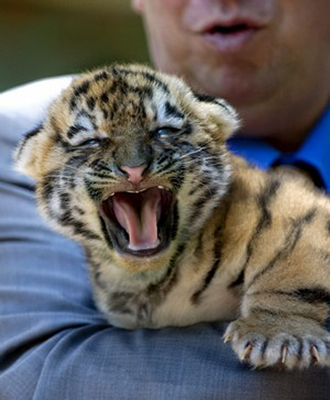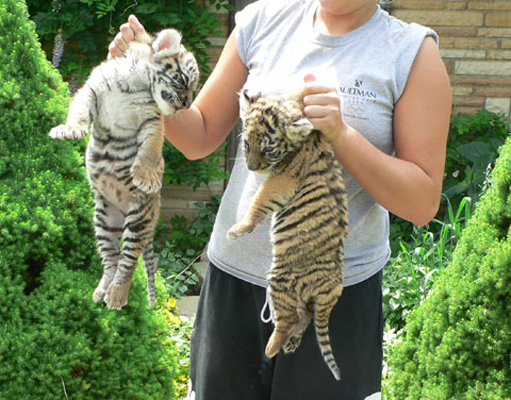Cub Petting
If you are looking for a place to pet or interact with tiger cubs, we are sorry, but we cannot refer you to any of these facilities. The cubs used for petting are provided by tiger breeders in this country. The practice is harmful to the cubs and their mothers (see below). We would appreciate it if you did not patronize any cub petting operation.
Petting
The most popular and profitable activity. You can hold, pet, walk, run and in some places swim with a tiger cub for a fee. The facility is usually advertised as a sanctuary with the tigers being rescues, and breeding done in the interest of conservation, when in fact the facility is a tiger mill that breeds and sells the tigers.


Technology has simplified the business. Every phone is a camera and who can resist the chance to hold an adorable baby tiger? They simply pull the cub out of the cage and hand them to you. Your friend takes your picture and you post it on Facebook or Instagram to share the experience. Recently, tiger selfies have become a business where tigers of all ages are used as props to feed social media/dating sites.

Cubs
Life for the cubs is fairly arduous during this process. Fed baby formula with a milk bottle, they learn to rely on humans for food. Cub petting sessions last as long as the facility is open. Handling and selfies are their most profitable revenue source. Group sessions are supplemented with private play time with the cubs. Sleep deprivation and missing nutrients lead to metabolic bone disease and crippling deformities. After 90 days, a cub weighs 40 lbs and can kill a child. They are warehoused for a year and a half and put into the breeding system. Some breeders underfeed cubs or give them diuretics to keep their weight down and extend their cub petting life.


Mother
Life for the mother is arguably worse. In the wild a tiger breeds every 2 ½ years—the time it takes a mother to teach her cubs to hunt. In captivity, breeders take the cubs away a day or two after they are born. Their mother is returned to the breeding cage and impregnated again. The gestation period is 109 days. We have come across females bred 3 times in a year. At 3 to 4 cubs per litter that is 10 cubs in a year, the number of cubs she would produce in her lifetime in the wild. The forced breeding continues until the female can no longer produce cubs. She will die prematurely, usually from breast cancer. She will have never nursed a cub.